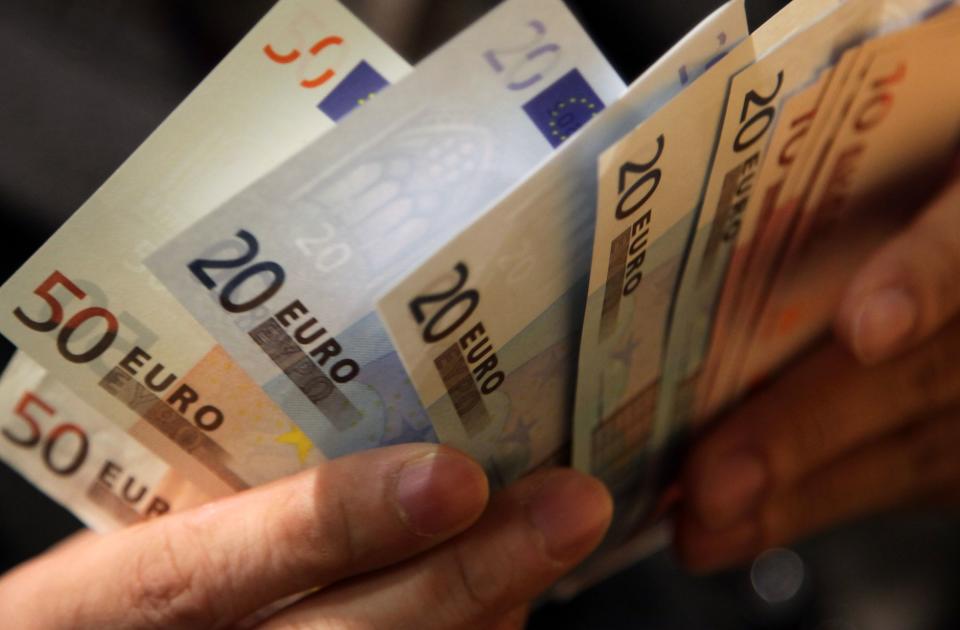Morgan Stanley Sees Euro Sliding 7% on Risk of Big ECB Cuts
(Bloomberg) -- Morgan Stanley sees the euro sliding toward parity with the dollar within months on the risk markets move to price in more aggressive policy easing by the European Central Bank to tackle a faltering economy.
Most Read from Bloomberg
Chicago Halts Hiring as Deficit Tops $1 Billion Through 2025
World's Second Tallest Tower Spurs Debate About Who Needs It
UC Berkeley Gives Transfer Students a Purpose-Built Home on Campus
The US bank expects the single currency to slump to $1.02 by year-end, a roughly 7% depreciation from current levels, its head of Group-of-10 foreign-exchange strategy David Adams said in an interview. That view rests on markets betting the central bank will press ahead with interest-rate cuts at its next three meetings, along with the potential of a jumbo half-point move.
The call is the most bearish among currency analysts surveyed by Bloomberg, with the consensus anticipating the euro will actually rise to end the year at $1.11. It comes ahead of an expected quarter-point rate cut at the ECB’s meeting this Thursday, with trader attention firmly on the outlook for coming months.
“There is plenty of scope for the market to refocus on the fact that the ECB could be cutting deeper and faster than what is currently priced,” said Adams, who formerly worked at the Federal Reserve Bank of New York. “This week’s meeting could prove an important catalyst for the market to start thinking about that.”
Money markets are currently wagering on about 60 basis points of easing in Europe this year, compared to around 110 basis points in the US. Morgan Stanley’s economists expect a cut this week and then an additional 25 basis-point move once a quarter through the end of 2025, bringing the deposit rate down to 2.25% by the end of next year.
Adams, based in London, sees scope for traders to ramp up bets on the ECB to price in the risk of a bigger half-point reduction.
“If data continue to deteriorate further in Europe, the market has to start thinking about not just 25 basis points a quarter but maybe 25 basis points every meeting or perhaps even the risk of a 50 basis-points cut, much in the same way the market has applied concerns about a slowdown in the US to a faster and deeper cutting cycle from the Fed,” he said.
Options traders are already becoming less positive on the euro’s prospects heading into the ECB meeting, with the premium to get bullish exposure shrinking this week.
Adams has been recommending a short euro-dollar position in options since February, with the view that the US election in November could boost the dollar. Rising political uncertainty in Europe is now adding to his conviction for a downtrend in the euro.
While the spotlight has been firmly on French politics in recent months, Adams also sees German political developments as equally concerning for the longer-term political stability of the region.
“Political risk premia and uncertainty are rising at a time when economic growth is slowing,” he said. “Both of those factors suggest investors would be less willing to deploy capital in the region.”
--With assistance from Vassilis Karamanis.
(Updates to add comments. An earlier version was corrected to clarify the call is based on markets pricing more aggressive ECB rate cuts.)
Most Read from Bloomberg Businessweek
EV Leases Go as Low as $20 a Month to Help Dealers Clear Their Lots
Putting Olive Oil in a Squeeze Bottle Earned This Startup a Cult Following
Pandemic-Fueled ‘Dating Recession’ Is Reshaping American Economy
‘They Have Stolen Our Business’: When You Leave Russia, Putin Sets the Terms
?2024 Bloomberg L.P.

